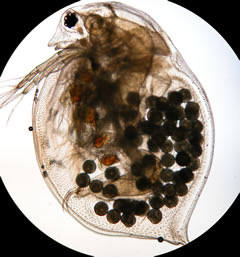Total dissolved solids
Total Dissolved Solids (TDS) refer to the combined content of all inorganic and organic substances contained in a liquid in molecular, ionized, or micro-granular (colloidal sol) suspended form. Generally, TDS is discussed in the context of water quality and water purification. It is a significant factor in determining the quality of drinking water and has implications for both health and the environment. The measurement of TDS in water is typically expressed in parts per million (ppm) or milligrams per liter (mg/L).
Overview[edit | edit source]
Total dissolved solids in water comprise inorganic salts, such as calcium, magnesium, potassium, sodium, bicarbonates, chlorides, and sulfates, as well as a small amount of organic matter. The presence of TDS in water affects its taste, healthfulness, and utility in industrial applications. High levels of TDS can make water taste bitter, salty, or metallic and can have negative effects on health if toxic ions or compounds are present. Conversely, water with extremely low TDS may also be unsatisfactory for consumption, lacking in essential minerals.
Sources of TDS[edit | edit source]
The sources of total dissolved solids include natural sources, sewage, urban and agricultural runoff, and industrial wastewater. Natural sources encompass minerals from rocks and soils through which the water travels, while human activities contribute to TDS through pollution and waste discharge.
Measurement[edit | edit source]
TDS is measured by weighing the mass of the solids remaining after all the water has been evaporated from a filtered sample. Alternatively, it can be estimated indirectly through electrical conductivity tests, as dissolved ions increase the conductivity of water. The latter method is more common due to its speed and convenience.
Health and Environmental Implications[edit | edit source]
While most components of TDS are generally not harmful, high levels can lead to health issues, particularly if toxic substances like lead or mercury are present. The Environmental Protection Agency (EPA) in the United States does not enforce a maximum contaminant level for TDS but suggests a secondary maximum contaminant level of 500 mg/L to manage the aesthetic qualities of drinking water.
In addition to health concerns, high TDS levels can have environmental impacts, affecting aquatic life by altering water chemistry and reducing the availability of oxygen in the water.
Regulation and Treatment[edit | edit source]
Water treatment processes such as reverse osmosis, distillation, and deionization are used to remove dissolved solids from water, making it suitable for drinking and industrial applications. The choice of treatment depends on the composition and level of TDS in the water.
Conclusion[edit | edit source]
Understanding and managing the levels of total dissolved solids is crucial for ensuring the safety and palatability of drinking water, as well as for meeting the requirements of various industrial processes. Regular monitoring and appropriate water treatment can mitigate the risks associated with high TDS levels.
This article is a environment-related stub. You can help WikiMD by expanding it!
Transform your life with W8MD's budget GLP1 injections in NYC from $125 and up biweekly
W8MD offers a medical weight loss program NYC and a clinic to lose weight in Philadelphia. Our W8MD's physician supervised medical weight loss centers in NYC provides expert medical guidance, and offers telemedicine options for convenience.
Why choose W8MD?
- Comprehensive care with FDA-approved weight loss medications including:
- loss injections in NYC both generic and brand names:
- weight loss medications including Phentermine, Qsymia, Contrave, Diethylpropion etc.
- Accept most insurances for visits or discounted self pay cost.
- Generic weight loss injections starting from just $125.00 for the starting dose
- In person weight loss NYC and telemedicine medical weight loss options in New York city available
Book Your Appointment
Start your NYC weight loss journey today at our NYC medical weight loss, and Philadelphia and visit Philadelphia medical weight loss Call (718)946-5500 for NY and 215 676 2334 for PA
Search WikiMD
Ad.Tired of being Overweight? Try W8MD's NYC physician weight loss.
Semaglutide (Ozempic / Wegovy and Tirzepatide (Mounjaro / Zepbound) available. Call 718 946 5500.
Advertise on WikiMD
|
WikiMD's Wellness Encyclopedia |
| Let Food Be Thy Medicine Medicine Thy Food - Hippocrates |
Translate this page: - East Asian
中文,
日本,
한국어,
South Asian
हिन्दी,
தமிழ்,
తెలుగు,
Urdu,
ಕನ್ನಡ,
Southeast Asian
Indonesian,
Vietnamese,
Thai,
မြန်မာဘာသာ,
বাংলা
European
español,
Deutsch,
français,
Greek,
português do Brasil,
polski,
română,
русский,
Nederlands,
norsk,
svenska,
suomi,
Italian
Middle Eastern & African
عربى,
Turkish,
Persian,
Hebrew,
Afrikaans,
isiZulu,
Kiswahili,
Other
Bulgarian,
Hungarian,
Czech,
Swedish,
മലയാളം,
मराठी,
ਪੰਜਾਬੀ,
ગુજરાતી,
Portuguese,
Ukrainian
Medical Disclaimer: WikiMD is not a substitute for professional medical advice. The information on WikiMD is provided as an information resource only, may be incorrect, outdated or misleading, and is not to be used or relied on for any diagnostic or treatment purposes. Please consult your health care provider before making any healthcare decisions or for guidance about a specific medical condition. WikiMD expressly disclaims responsibility, and shall have no liability, for any damages, loss, injury, or liability whatsoever suffered as a result of your reliance on the information contained in this site. By visiting this site you agree to the foregoing terms and conditions, which may from time to time be changed or supplemented by WikiMD. If you do not agree to the foregoing terms and conditions, you should not enter or use this site. See full disclaimer.
Credits:Most images are courtesy of Wikimedia commons, and templates, categories Wikipedia, licensed under CC BY SA or similar.
Contributors: Prab R. Tumpati, MD







